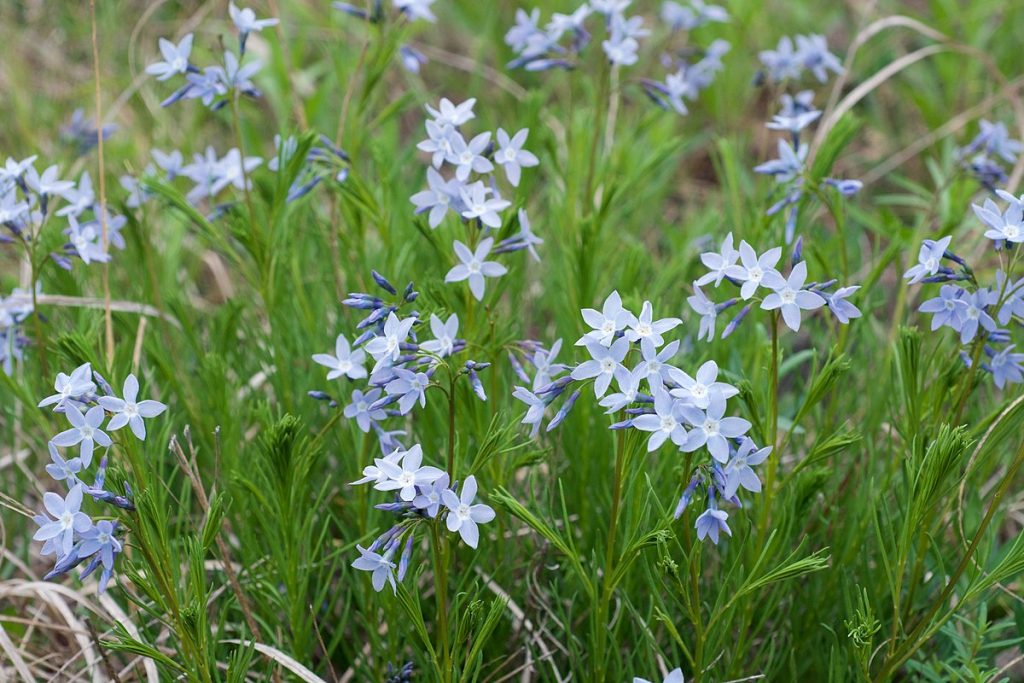
A native of southeastern United States, this herbaceous perennial is a member of the dogbane family, Apocynaceae, that also includes perwinkle, oleander, and milkweed. The plant grows 1-3′ tall and has linear dark green leaves that are 2-4″ long, hairy and have margins that curl slightly toward the underside of the blade. The foliage clusters towards the ends of the stems, looks attractive all summer and turns golden yellow in the fall. In spring, terminal racemes of starry, pale blue, 1/2″ flowers appear and persist for 3-4 weeks, attracting butterflies and other pollinators. Downy bluestar forms dense clumps, provides long season interest from spring to fall , and may be used as a hedge or low screen. The genus name, Amsonia, honors John Amson (1738–circa 1764) physician and amateur botanist in colonial Williamsburg. The specific epithet, ciliata, is the Latin word for the edge of the upper eyelid i.e. the eyelashes, and refers to the hairs on the leaves.
Type: Herbaceous perennial
Bloom: Racemes of small, starry, pale blue flowers in spring
Size: 1-3′ H x 3′ W
Light: Full sun; light shade
Soil: Average, consistently moist, well-drained
Hardiness: Zones 6-10
Care: Cut foliage back to 10″ tall after flowering to promote regrowth and/or bushiness as needed.
Pests and Diseases: None of significance
Propagation: Tip cuttings in summer, division, seed
Companion Plants: Peony, oat grass, false indigo, sundrops
Outstanding Selections: None available
Photo Credit: Wikipedia